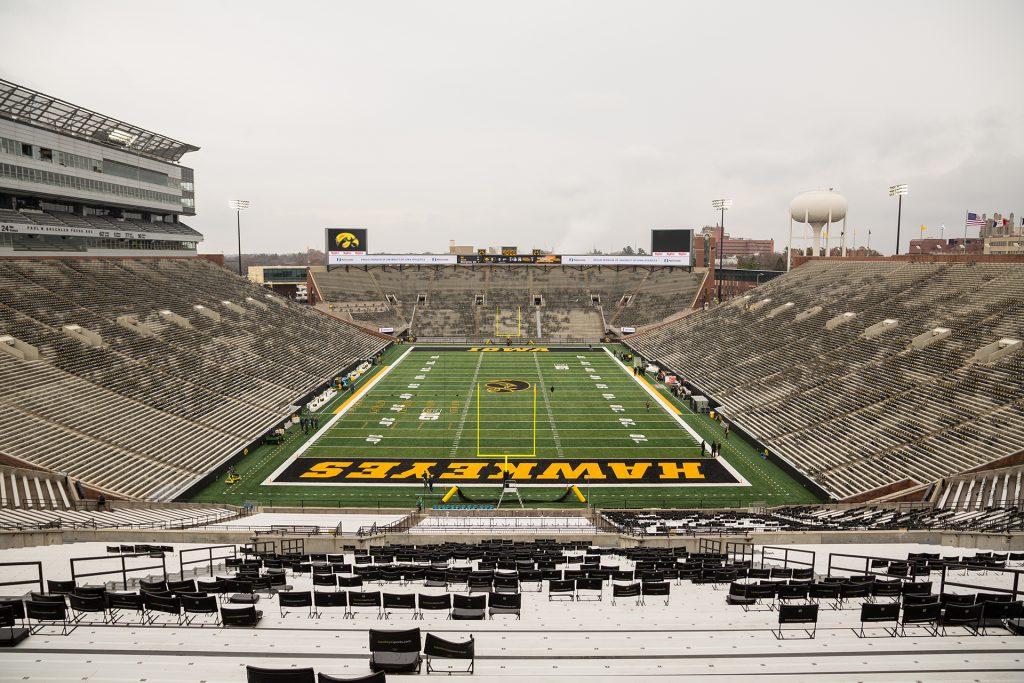An $89 million renovation to the north end zone of Kinnick Stadium will be nearly complete come the 2018 football season. Two Daily Iowan sports writers tackle the question, was it worth it?
Yes
The new north end zone project may have cost some seats, but it will bring in something much more important to the game of football: noise.
If you haven’t had a chance to see the wall yet, it’s massive, and it’s solid. Imagine that concrete packed with fans and each one yelling.
I feel sorry for the visiting team.
Kinnick is famous for supporting the Black and Gold, the home-field advantage aiding in major upsets against Michigan and Ohio State. That is just going to keep getting stronger.
Now, if we’re going away from the game for a bit (although I think the noise is the biggest advantage in this project), the fans themselves will benefit, too.
People don’t attend sporting events just for the game anymore, they come for the experience that outweighs being comfortable watching the game at home. The new bathrooms and options that people will have in the north end zone will give fans a nicer opportunity than in any other part.
Not to mention the revenue Iowa athletics will get from the nicer, more expensive, preferred seating options that will no doubt sell out for the comfort and experience aspect.
The project is winning in all aspects of those affected, and it was a needed renovation to update Kinnick to the needs of the patrons.
Let’s hope it brings good luck on the field.
— Anna Kayser
No
This upcoming football season the Hawkeyes will play with a newly renovated part of Kinnick Stadium.
In 2016, the state Board of Regents agreed to an $89 million renovation in the north end zone, adding new premium club box seating and outdoor seats as well. This should bring a new experience for premium club members, who now have access to additional seating.
With all the renovations, there is still something lacking about Kinnick: the capacity. Right now, the general-admission seating capacity is 70,585, but after the north end zone project, the seating capacity will remain the same.
When hearing $89 million project, the first thing that comes to mind is a larger capacity, but that’s the problem with this project. Yes, all the new additions will add new features to Kinnick, like never seen before, but the seating capacity is supposed to stay the same.
Today, the three biggest college football stadiums are all in the Big Ten: Michigan’s Big House, Beaver Stadium at Penn State, and Ohio State’s Horseshoe. All of these stadiums exceed 100,000 and give the team a huge home-field advantage.
For the Hawkeyes to establish a better home-field advantage, adding more seats for fans can be a step in that direction. It’s great that Iowa is offering more to its premium club seat owners, but to help everyone get the best experience at Kinnick, athletics officials should have enhanced the student section and added open more seats for the public.
Regularly, Michigan, Ohio State, and Penn State are at the top of the standings in the Big Ten, partly because they win all of their home games. Because their stadiums are so historic, it also helps recruit talent.
In the near future, Iowa should try to see what it can do to make a more hostile environment for opponents and an enjoyable experience for the fans.
— Patrick Lynch
RELATED: UI seeks more Kinnick renovations



